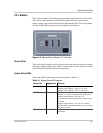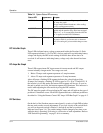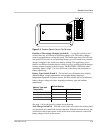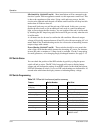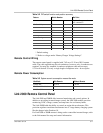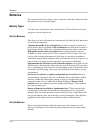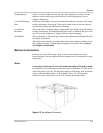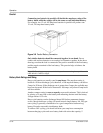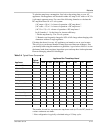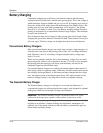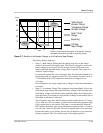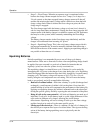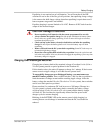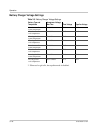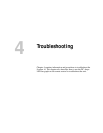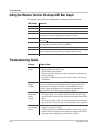
Batteries
975-0251-01-01 3–11
To calculate amp-hour consumption, first look at the rating plate on your AC
appliances. Each appliance will be rated in either AC amps or AC watts or AC VA
(volt-amps) apparent power. Use one of the following formulas to calculate the
DC amp-hour draw for a 12-volt system:
(AC amps × 10) × 1.1 × hours of operation = DC amp hours *
(AC watts ÷ 12) × 1.1 × hours of operation = DC amp hours *
(AC VA ÷ 12) × 1.1 × hours of operation = DC amp hours *
In all formulas, 1.1 is the factor for inverter efficiency.
* Divide amp hours by 2 for 24-volt systems.
** Batteries are frequently charged to 85% of full charge when charging with
alternators without 3-stage regulators.
Calculate the above for every AC appliance you intend to use on your inverter.
This will give you the total number of amp hours used between recharges. Size
your battery bank using this number as a guideline. A good rule to follow is to size
the battery bank about two times larger than your total amp hour load requirement.
Plan on recharging when 50% discharged.
The number in each box represents the amp hours used (at 12 volts DC) based on
various continuous run times.
* Note: refrigeration is typically calculated using a 1/3 duty cycle.
Table 3-4
Typical Power Consumption
Appliance
Typical
Wattage
Appliance Run Times/Amp Hours*
5 min 15 min 30 min 1 hr. 2 hr. 3 hr. 8 hr. 24 hr.
13" color TV 500.331248123296
19" color TV 1000.66248162464192
VCR 500.331248123296
Lamp 1000.66248162464192
Blender 300 2 6 12
Curling iron 50 0.33 1 2
3/8" power drill 500 3.3 10 20
Icemaker* 200 2.6 5.2 10.4 15.6 41.6 83.2
Coffee maker 1000 6.6 20 40 80 160
3 cu. foot refrigerator*150 248123296
20 cu. foot refrigerator* 750 21 42 84 126 336 672
Compact microwave 750 5 15 30 60 120 180
Full-size microwave 1500 10 30 60 120 240 360
Vacuum 11007.3224488176264



